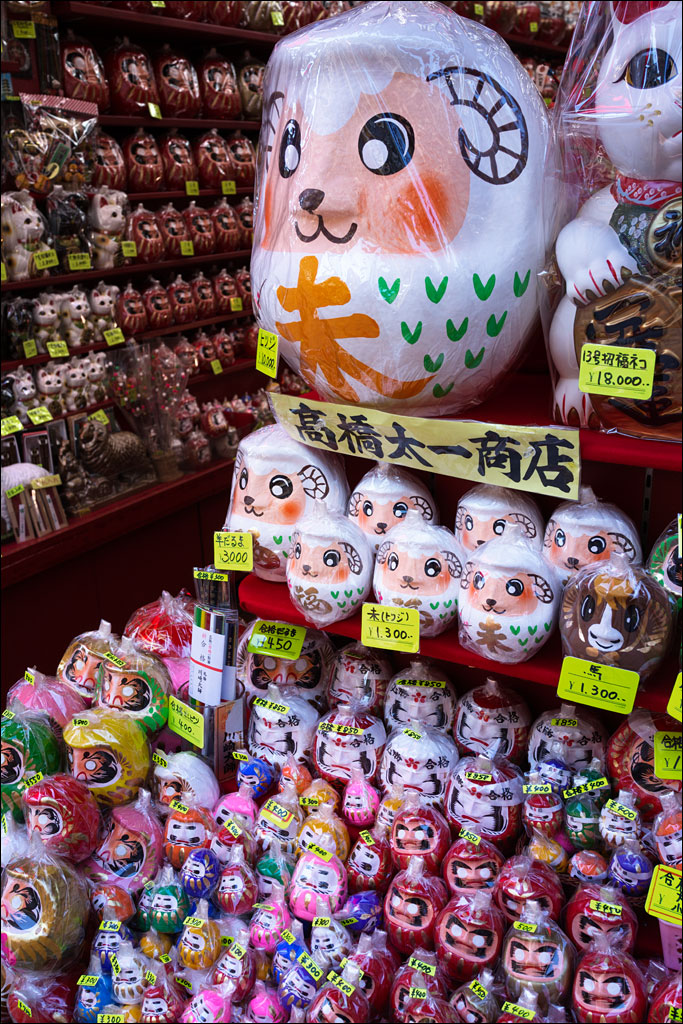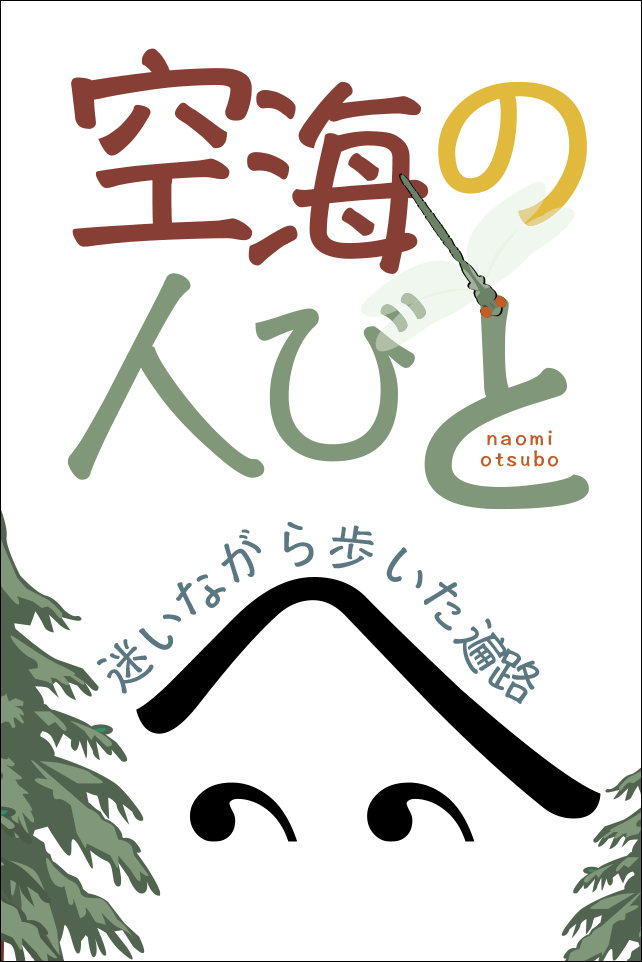Category Archives: Japanese Religion
Sacred Spaces, Part 3
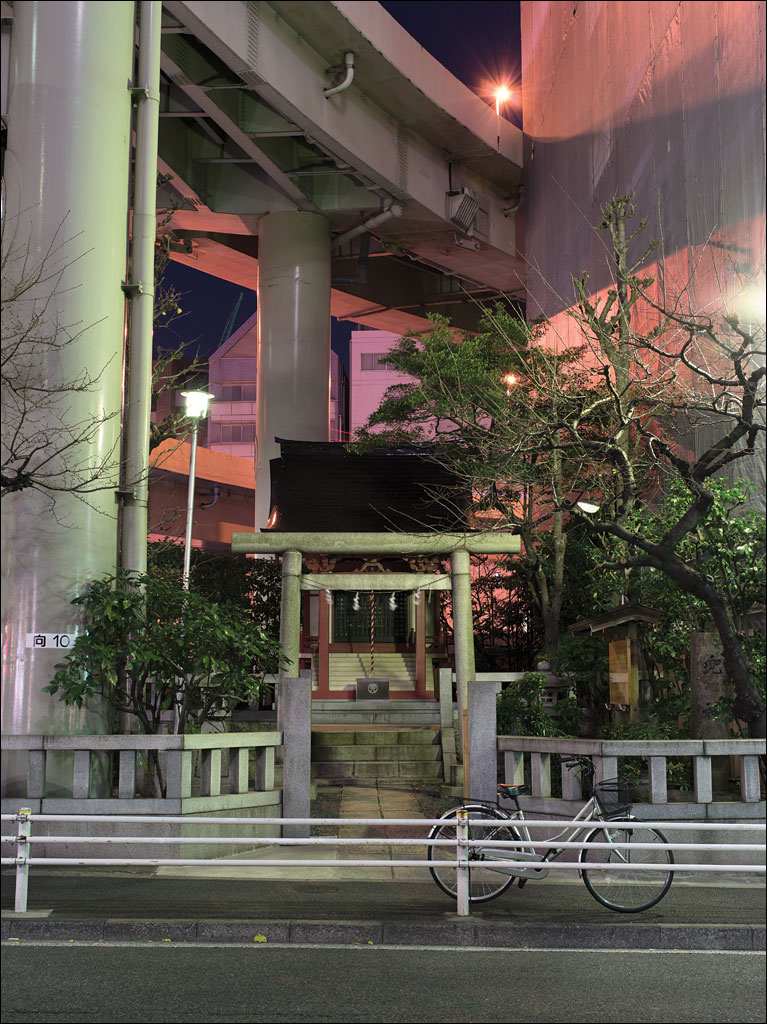 Kabuto Jinja under the Shuto Expressway, Chuo-ku, Tokyo. This shrine faces the Tokyo Stock Exchange. From the book Earth, Water, Fire, Wind, Emptiness: Tokyo Landscape. Click on the image for a larger view.
Kabuto Jinja under the Shuto Expressway, Chuo-ku, Tokyo. This shrine faces the Tokyo Stock Exchange. From the book Earth, Water, Fire, Wind, Emptiness: Tokyo Landscape. Click on the image for a larger view.
Sacred Spaces, Part 2
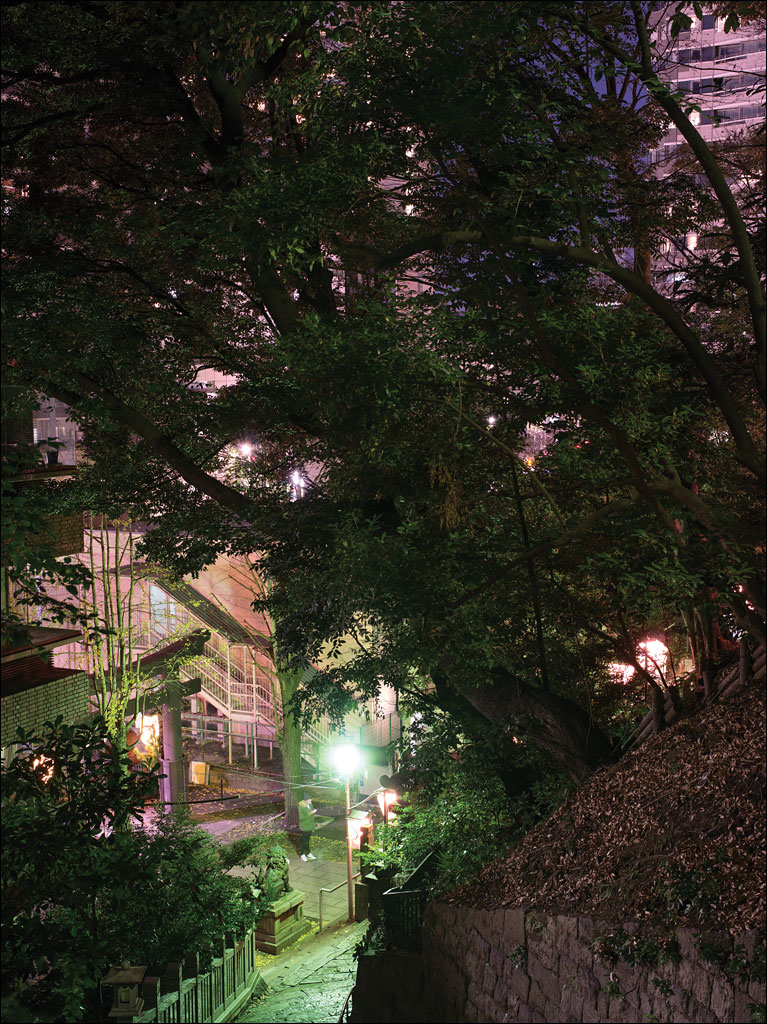 The entrance to Atago Jinja, founded in 1603, marked by the shinto Tori gate or Torii. Built on one of the highest points in Edo overlooking the bay (26 m, 85 ft.), the shrine was famous for its views. Today, that view is obscured by buildings. The fire god Homusubi-no-mikoto is the main deity, reflecting how deadly and feared fires were to the Edo population. From the book Earth, Water, Fire, Wind, Emptiness: Tokyo Landscapes. Click on the image for a larger view.
The entrance to Atago Jinja, founded in 1603, marked by the shinto Tori gate or Torii. Built on one of the highest points in Edo overlooking the bay (26 m, 85 ft.), the shrine was famous for its views. Today, that view is obscured by buildings. The fire god Homusubi-no-mikoto is the main deity, reflecting how deadly and feared fires were to the Edo population. From the book Earth, Water, Fire, Wind, Emptiness: Tokyo Landscapes. Click on the image for a larger view.
Sacred Spaces, Part 1
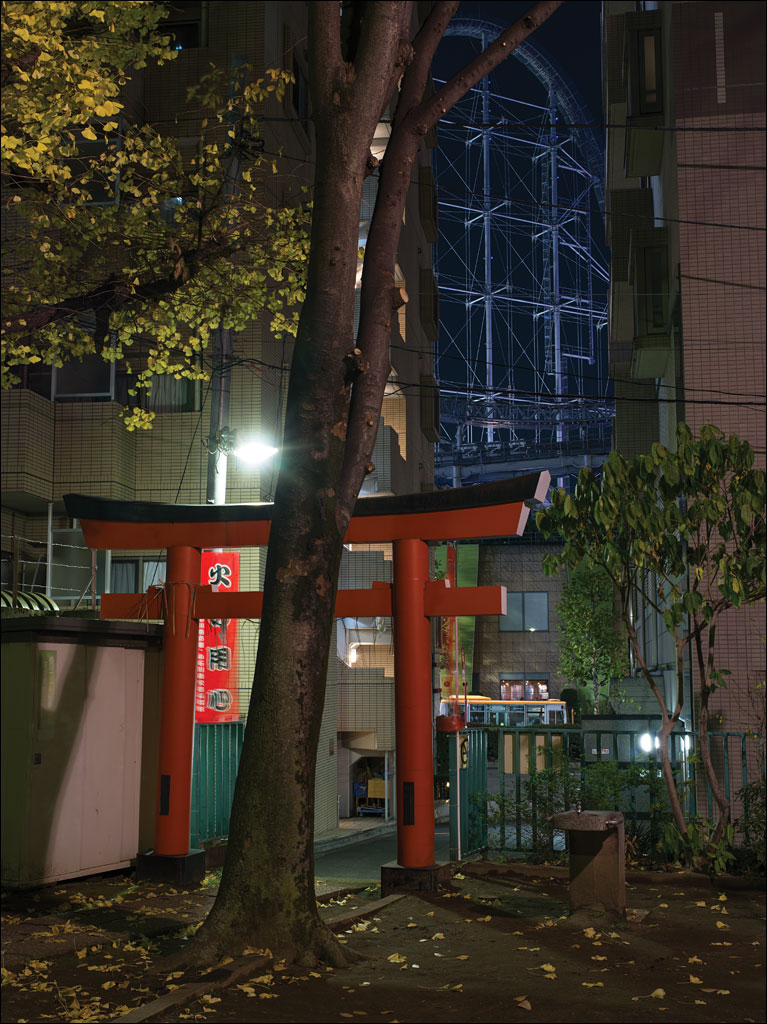 Shusse Inari Jinja, Bunkyo-ku, Tokyo. The shrine was founded in 1620 by Lady Kasuga, a powerful woman in the Tokugawa Shogunate. The sound that periodically sweeps through the shrine is a cross between wind and thunder—the noise of the Thunder Dolphin roller coaster, the structure in the background, as the cars pass the gap between the buildings. From the book Earth, Water, Fire, Wind, Emptiness: Tokyo Landscapes. Click on the image for a larger view.
Shusse Inari Jinja, Bunkyo-ku, Tokyo. The shrine was founded in 1620 by Lady Kasuga, a powerful woman in the Tokugawa Shogunate. The sound that periodically sweeps through the shrine is a cross between wind and thunder—the noise of the Thunder Dolphin roller coaster, the structure in the background, as the cars pass the gap between the buildings. From the book Earth, Water, Fire, Wind, Emptiness: Tokyo Landscapes. Click on the image for a larger view.
Kansas City Japan Festival
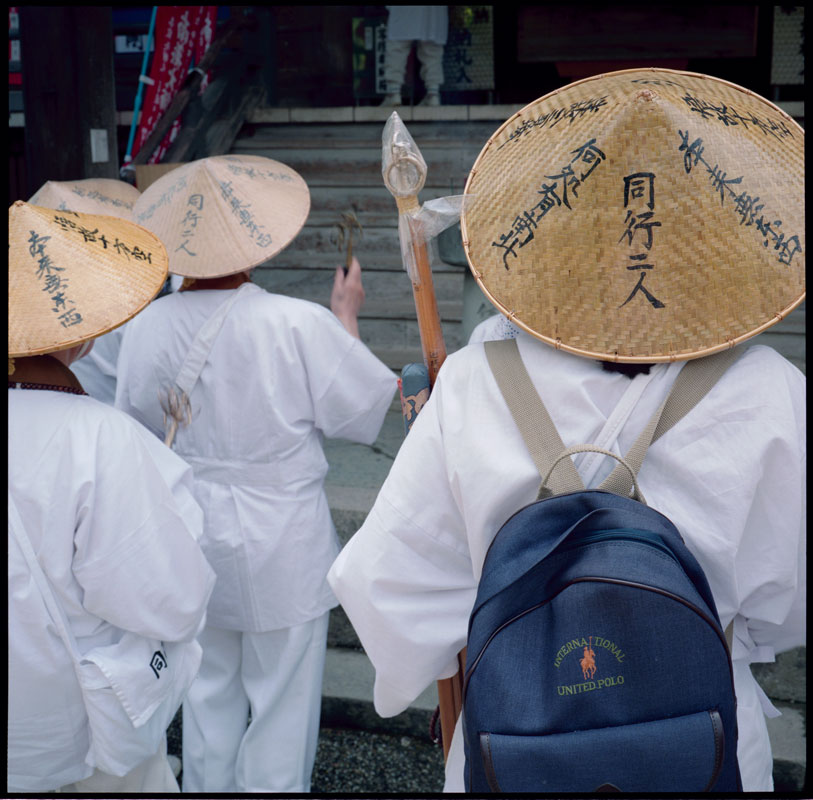 Naomi and I will be speaking at this year’s Kansas City Japan Festival. We will be giving a one-hour presentation on our experience of the 88 Sacred Places of Shikoku Pilgrimage, a 700-mile walking pilgrimage around the island of Shikoku in Japan. Our presentation is at 1 pm in the recital hall, but events are planned for the entire day.
Naomi and I will be speaking at this year’s Kansas City Japan Festival. We will be giving a one-hour presentation on our experience of the 88 Sacred Places of Shikoku Pilgrimage, a 700-mile walking pilgrimage around the island of Shikoku in Japan. Our presentation is at 1 pm in the recital hall, but events are planned for the entire day.
The festival is on October 5th at the Johnson County Community College and sponsored by the Heart of America Japan-America Society. More can be found on the festival website.
Kukai no Hitobito: Coming Soon
Hase-dera
 Tucked in along the walls of a valley just south of Nara is the Buddhist temple Hase-dera. The Japanese visit in the spring to see the cherry, plum, and magnolia in blossom. The compound is huge with over thirty buildings. Long flights of stone steps help you traverse the topography. Despite the size, Hase-dera has cultivated a landscape where it is difficult to separate the artificial from the natural. Click on the image for a larger view.
Tucked in along the walls of a valley just south of Nara is the Buddhist temple Hase-dera. The Japanese visit in the spring to see the cherry, plum, and magnolia in blossom. The compound is huge with over thirty buildings. Long flights of stone steps help you traverse the topography. Despite the size, Hase-dera has cultivated a landscape where it is difficult to separate the artificial from the natural. Click on the image for a larger view.
New Years in Tokyo
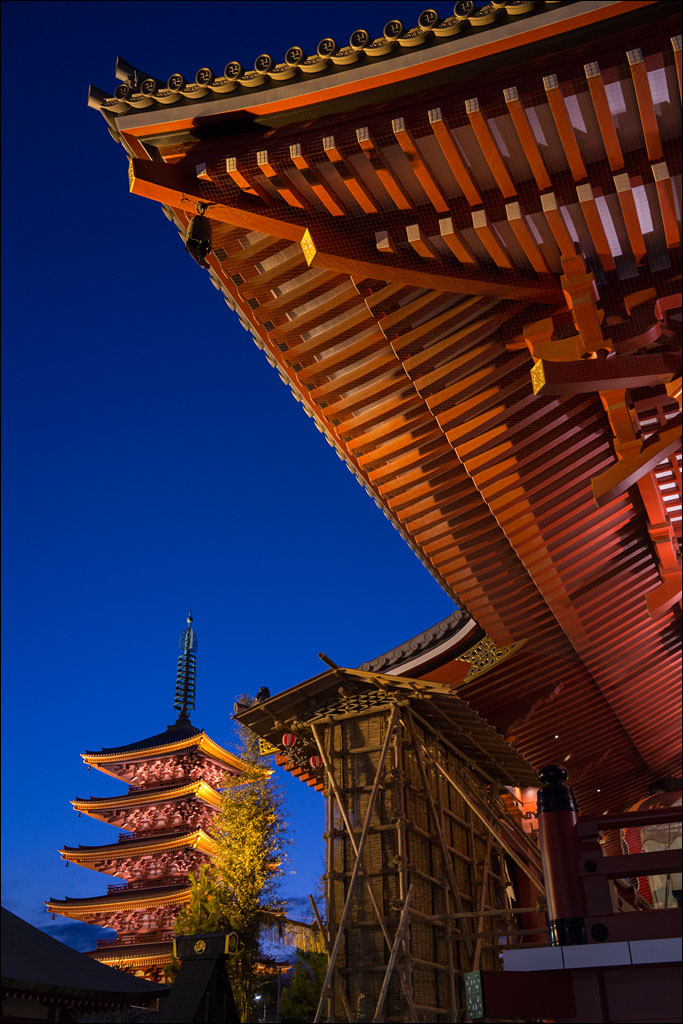 New years in Japan is a rich event. Millions of Japanese visit shrines and temples. One of the largest temples in Tokyo and one of the busiest is Senso-ji in Asakusa. This temple is famous for its gate. What it is little known for is one of the shortest rituals of the new year celebration, moja-okuri. Click on the image for a larger view.
New years in Japan is a rich event. Millions of Japanese visit shrines and temples. One of the largest temples in Tokyo and one of the busiest is Senso-ji in Asakusa. This temple is famous for its gate. What it is little known for is one of the shortest rituals of the new year celebration, moja-okuri. Click on the image for a larger view.
Where Gods Dwell
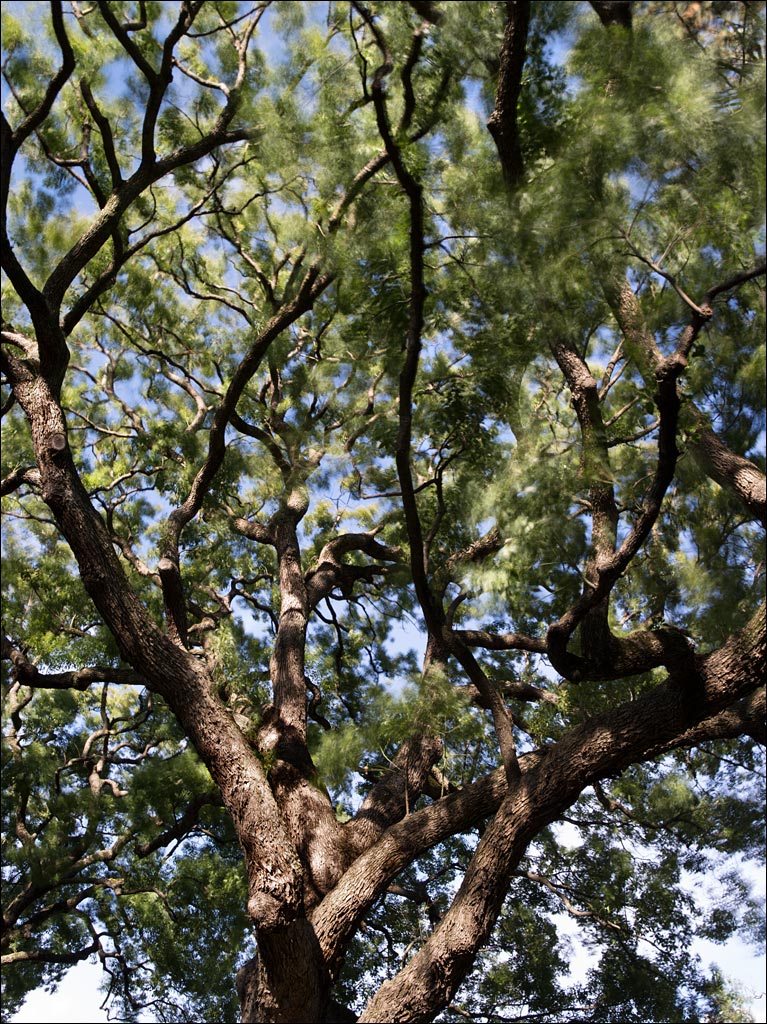 If anyone has seen the work of the director Hayeo Miyazaki, a common motif may strike you: trees. In the movies Castle in the Sky, My Neighbor Totoro, and Princes Mononoke, powerful, towering arboreal characters appear. The early Japanese believed trees, particularly evergreen trees, were dwellings for deities from heaven. With roots firmly in the earth and branches reaching into the sky, living off the wind and sun, and lifespans greater than any human, how could these beings be anything but divine. The Indian poet Rabindranath Tagore said, “trees are the Earth’s endless effort to speak to the listening heaven.” Click on the image for a larger view.
If anyone has seen the work of the director Hayeo Miyazaki, a common motif may strike you: trees. In the movies Castle in the Sky, My Neighbor Totoro, and Princes Mononoke, powerful, towering arboreal characters appear. The early Japanese believed trees, particularly evergreen trees, were dwellings for deities from heaven. With roots firmly in the earth and branches reaching into the sky, living off the wind and sun, and lifespans greater than any human, how could these beings be anything but divine. The Indian poet Rabindranath Tagore said, “trees are the Earth’s endless effort to speak to the listening heaven.” Click on the image for a larger view.
Tokyo Ghost Story
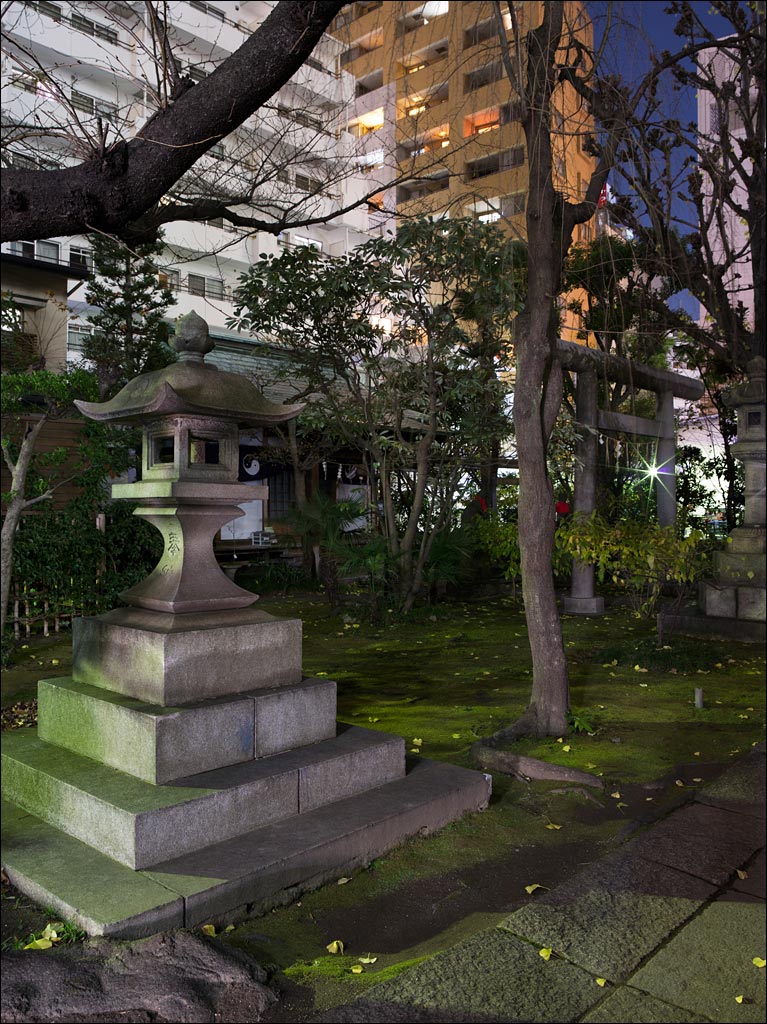 Oiwa Inari Tamia Shrine is located between Tokyo station and the Sumida river. This small shrine is connected to one of the most popular ghost stories in Japan, Yotsuya Kaidan, a 19th century Kabuki play. The story’s main character is a woman named Oiwa. Actors visit this shrine to pay respect to her spirit before performing her role.
Oiwa Inari Tamia Shrine is located between Tokyo station and the Sumida river. This small shrine is connected to one of the most popular ghost stories in Japan, Yotsuya Kaidan, a 19th century Kabuki play. The story’s main character is a woman named Oiwa. Actors visit this shrine to pay respect to her spirit before performing her role.
Oiwa is betrayed by a husband that murdered her father. She is horribly disfigured by a poisoned face cream given to her by Oume, a rival for her husband Iemon. Iemon, repulsed by Oiwa’s appearance, sends an accomplice to assault her to give him grounds for divorce. His partner cannot go through with the deed and reveals the plan to Oiwa. Showing Oiwa her disfigured image in a mirror, she is incensed. In her rage, she fatally injures herself with a sword. She dies cursing her husband, becoming an onryô, a vengeful spirit. By the end of the story, her spirit is revenged. A bloody tale, but a popular one.
Click on the image for a larger view.

